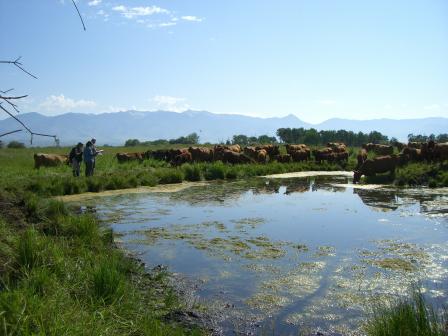Indicators: Human Disturbance
What is human disturbance?
Human disturbance is a measure of the vulnerability of aquatic resources to a variety of harmful human activities such as:
- tree removal
- road building
- construction near shorelines and streambanks
- artificial hardening of lakeshores with retaining walls and bulkheads
- pastures and cropland near waterways
- landfills and litter, and more.
To determine levels of human disturbance, scientists tally 11 different forms of human activity and disturbance and rank their intensity and proximity to the waterbody.

Why is it important to evaluate human disturbance?
Human disturbance activities are physical habitat stressors to rivers and streams, lakes and wetlands. Impacts of human disturbance can include:
- excess sedimentation,
- nutrient enrichment,
- loss of native plant growth,
- alteration of native plant communities,
- loss of habitat structure and
- modifications to substrate types.
These impacts, in turn, negatively affect fish, wildlife and other aquatic communities, as well as human uses of the waterbody. Measuring the extent and intensity of human disturbance near aquatic environments gives scientists a better understanding of the impact of human populations on the natural environment.
What can human disturbance tell us about the condition of water?
Waterbodies suffering from excessive levels of human disturbance are likely to have reduced quality habitat for fish, wildlife, and macroinvertebrates; suffer from water quality problems such as excess sediments and nutrients, litter, and chemical contamination; and are more likely to be unsuitable for recreational human uses.
